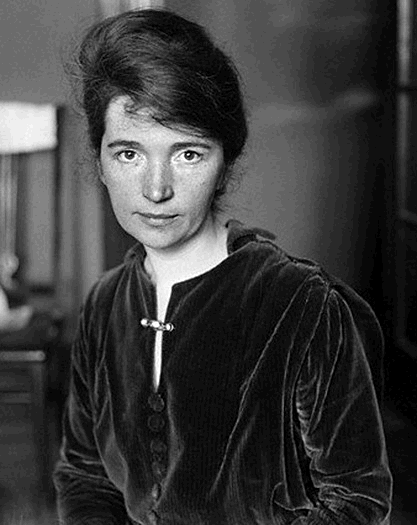|
|
|
|
|
|
|
|
|
|
|
|
|
|
|
MARGARET SANGER |
|
The first
birth-control clinic in the In
1914, Sanger began publishing The Woman Rebel, an eight-page feminist monthly, in which she coined
the term “birth control”…[The following year she rented
a storefront and opened the birth control clinic that
eventually became Planned Parenthood.] Nine days later, an
undercover policewoman came, posing as a mother of two who
couldn’t afford any more children. Mindell sold her a copy
of “What Every Girl Should Know.” Byrne discussed
contraception with her. The next day, the police arrived,
arrested Sanger, confiscated an examination table, and shut
down the clinic… At
Sanger’s trial, during which the judge waved a cervical cap
from the bench, Sanger hoped to argue that the law preventing
the distribution of contraception was unconstitutional;
exposing women, against their will, to the danger of dying in
childbirth violated a woman’s right to life. But the judge
ruled that no woman had “the right to copulate with a
feeling of security that there will be no resulting
conception.” In other words, if a woman wasn’t willing to
die in childbirth, she shouldn’t have sex. Sanger went to
Queens County Penitentiary. She was sentenced to thirty days. 
|
